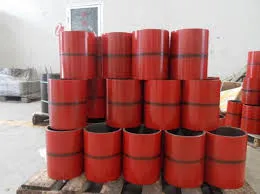- Afrikaans
- Albanian
- Amharic
- Arabic
- Armenian
- Azerbaijani
- Basque
- Belarusian
- Bengali
- Bosnian
- Bulgarian
- Catalan
- Cebuano
- Corsican
- Croatian
- Czech
- Danish
- Dutch
- English
- Esperanto
- Estonian
- Finnish
- French
- Frisian
- Galician
- Georgian
- German
- Greek
- Gujarati
- Haitian Creole
- hausa
- hawaiian
- Hebrew
- Hindi
- Miao
- Hungarian
- Icelandic
- igbo
- Indonesian
- irish
- Italian
- Japanese
- Javanese
- Kannada
- kazakh
- Khmer
- Rwandese
- Korean
- Kurdish
- Kyrgyz
- Lao
- Latin
- Latvian
- Lithuanian
- Luxembourgish
- Macedonian
- Malgashi
- Malay
- Malayalam
- Maltese
- Maori
- Marathi
- Mongolian
- Myanmar
- Nepali
- Norwegian
- Norwegian
- Occitan
- Pashto
- Persian
- Polish
- Portuguese
- Punjabi
- Romanian
- Russian
- Samoan
- Scottish Gaelic
- Serbian
- Sesotho
- Shona
- Sindhi
- Sinhala
- Slovak
- Slovenian
- Somali
- Spanish
- Sundanese
- Swahili
- Swedish
- Tagalog
- Tajik
- Tamil
- Tatar
- Telugu
- Thai
- Turkish
- Turkmen
- Ukrainian
- Urdu
- Uighur
- Uzbek
- Vietnamese
- Welsh
- Bantu
- Yiddish
- Yoruba
- Zulu
casing pup joint
Understanding Casing Pup Joints A Key Component in Oil and Gas Operations
In the field of oil and gas production, the integrity and efficiency of drilling operations are of paramount importance. One of the critical components facilitating these operations is the casing pup joint. Casing pup joints play a vital role in the overall structure of drilling operations, influencing both the safety and efficiency of extracting hydrocarbons from the earth.
What is a Casing Pup Joint?
A casing pup joint is a short piece of pipe that is used to connect two longer casing strings or to adjust the length of a casing string to fit specific drilling requirements. These joints are typically made from the same material as the casing pipes, ensuring uniformity in strength and structural integrity. They come in various lengths but are generally shorter than standard casing sections, providing a flexible solution for achieving desired depth and securing the wellbore.
Importance of Casing Pup Joints
1. Customization One of the most significant benefits of using casing pup joints is their ability to customize the casing string. Each well has unique geological conditions and requirements, and pup joints allow drillers to make precise adjustments that can enhance the overall performance of the well.
2. Structural Integrity The use of casing pup joints helps maintain the structural integrity of the well. They are designed to withstand high pressures and can be equipped with various thread types to ensure a secure connection. This strength is crucial, as any weaknesses in the casing can lead to catastrophic failures, including blowouts.
casing pup joint

3. Ease of Installation Casing pup joints are relatively easy to install, which can expedite the drilling process. The modularity they provide allows drillers to quickly adapt to changing conditions without having to replace entire sections of casing. This flexibility can save both time and resources on drilling operations.
4. Cost-Effectiveness Utilizing casing pup joints can also be a cost-effective solution. Instead of manufacturing new lengths of casing, operators can use pup joints to make adjustments, thereby reducing the material requirements and expenses associated with casing production.
Applications in Drilling Operations
Pup joints are widely utilized in various phases of drilling operations. They are essential in setups for production casing, intermediate casing, and surface casing, among others. For instance, during the production phase, pup joints may be used to connect tools or equipment that facilitate the extraction of oil or gas. Their role is not limited to initial drilling; they can also assist in maintenance work and interventions, ensuring that the well continues to operate efficiently throughout its lifecycle.
Conclusion
In conclusion, casing pup joints are a crucial component in the drilling and completion of oil and gas wells. They offer versatility, enhance safety, and provide cost-effective solutions for oil and gas operators. As drilling technology continues to advance, the role of casing pup joints will remain significant, reflecting the ongoing needs for adaptability and efficiency in the extraction of natural resources. Understanding their function and importance can help stakeholders within the industry make informed decisions and optimize their operations. In a sector where precision and reliability are critical, casing pup joints play an indispensable role in delivering successful drilling outcomes.
-
Tubing Pup Joints: Essential Components for Oil and Gas OperationsNewsJul.10,2025
-
Pup Joints: Essential Components for Reliable Drilling OperationsNewsJul.10,2025
-
Pipe Couplings: Connecting Your World EfficientlyNewsJul.10,2025
-
Mastering Oilfield Operations with Quality Tubing and CasingNewsJul.10,2025
-
High-Quality Casing Couplings for Every NeedNewsJul.10,2025
-
Boost Your Drilling Efficiency with Premium Crossover Tools & Seating NipplesNewsJul.10,2025







